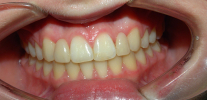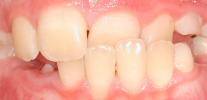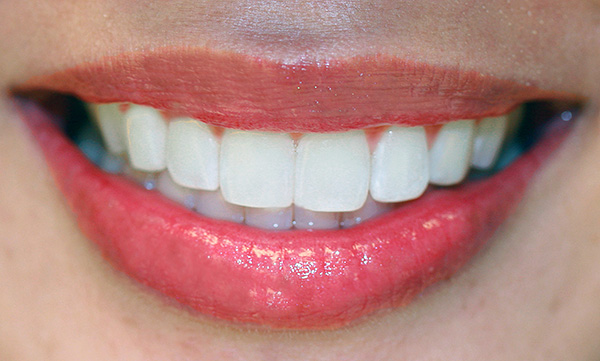
The term "bite" in orthodontics refers to the type of closing of both jaws between themselves in a static (habitual, effortless) position. The so-called orthognathic bite is recognized by physicians as the most physiological - if it is present, a person can fully perform the functions of chewing, breathing and speaking, and therefore, live a full life.
On a note
Orthognathic bite most of all corresponds to an even and beautiful “Hollywood smile”, however, as we will see below, some deviations from the ideal can be present even in this case.
Let's see what this bite is, how it is formed, what are its main features, and whether orthodontic treatment can be required with orthognathic bite ...
Why orthognathic bite is so important for healthy teeth.
When orthognathic occlusion creates optimal conditions for the functioning of the entire dental system.The teeth occupy natural spaces in the rows, normal for them, without hampering hygiene with a toothbrush, and close together in a position that is most suitable for efficient chewing of food.
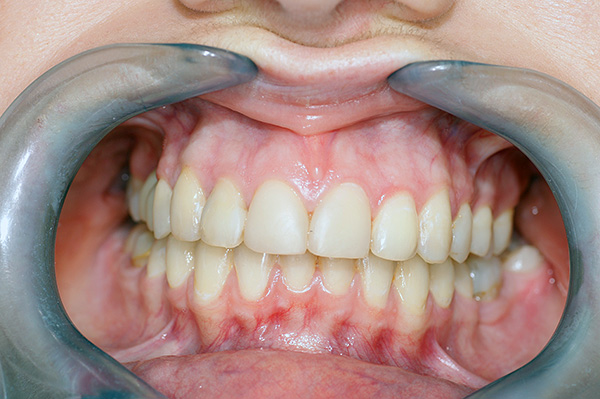
With such a physiological bite in an adult, there are normally no significant gaps between the teeth, which means that there are no additional conditions for the accumulation of food debris. When food in significant quantities regularly remains in the interdental spaces, rotting begins here, which causes halitosis (breath), gingivitis, demineralization and softening of the enamel of the side walls of the teeth.
On a note
It is known that any deviations from normal occlusion, be it crowding of the teeth, their abnormal position, the presence of three (large intervals) is a risk factor for caries, as often the incorrect position of the teeth contributes to the accumulation of food particles and does not allow to completely clean the enamel with a brush from plaque and bacterial film.
The photo below shows how bite abnormalities can impede dental hygiene:
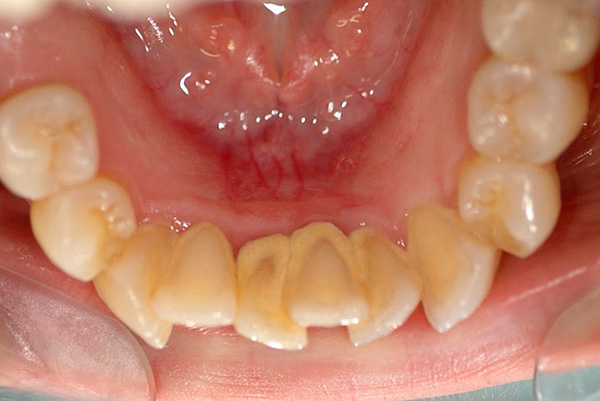
With orthognathic bite, periodontal tissues are not subjected to excessive stress andstress, while deviations of the teeth from the normal position are often created foci of tension in the gums, ligaments, disrupts the natural process of the exchange of nutrients, which can cause a loss of the adjacent part of the gums and exposure of the cement of the tooth root.
In the presence of bite pathologies, patients may notice the appearance or aggravation of the so-called wedge-shaped defects, increased sensitivity to acidic, cold, excessive erasure of teeth.

In addition, many orthodontists, based on extensive clinical experience, believe that if there is even the slightest deviation from the orthognathic bite, the temporomandibular joint (TMJ) reacts with a peculiar restructuring of the ligamentous apparatus. Crunching, clicking when opening the mouth and chewing, pain and muscle tension, regular headaches, sometimes not relieved by the use of analgesics, are typical signs of a wrong work of the TMJ against the background of deviations from the correct bite.
On a note
Among the possible problems due to improper bite, bruxism is particularly worth mentioning - excessive compression and gnashing of teeth, usually at night.
An interesting fact: many general practitioners (pediatricians, therapists) often believe that the cause of bruxism is helminthiasis, that is, worm infestation. Doctors believe that the presence of helminths in the body causes hunger in a person, which causes him to secrete a large amount of saliva in a dream and involuntarily perform chewing movements. However, there is no scientific evidence for this hypothesis ... While among scientifically proven causes of bruxism, dentists distinguish stress and the above-described TMJ disorders.
When orthognathic bite, as a rule, diction is not disturbed, and the smile looks beautiful.
Signs of orthognathic bite
Orthognathic bite is characterized by a number of specific features - let's take a closer look at them in order to have a clear idea of what the “Hollywood smile” is.
In the language of orthodontists, orthognathic bite is the closure of the dentition according to the 1st class of Angle, namely: the mesial-buccal cusp of the first molar of the upper jaw is located in the inter-hilar space (fissure) of the first molar of the lower jaw. Thus, the so-called key occlusion is formed.
An example is shown in the figure below:
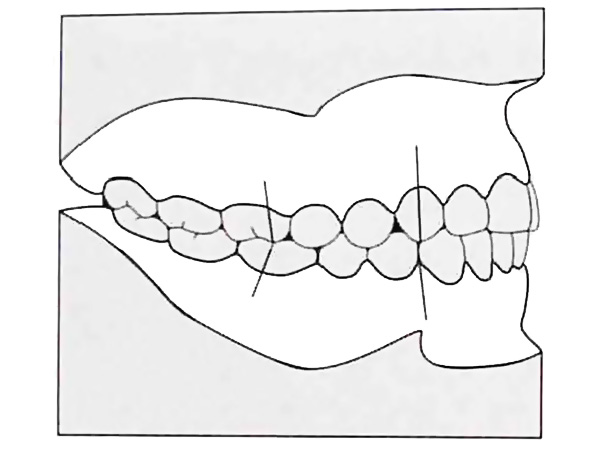
Occlusion is determined by the nature of the displacement of the lower jaw relative to the upper one, at which a certain number of teeth are in contact with each other. This is an important concept for dentists, through which you can understand the cause of various complaints of patients.
There are four main types of occlusion: anterior, right lateral, left lateral and, finally, central occlusion. Central occlusion (central occlusion) is the position of the lower jaw relative to the upper one, at which the maximum number of teeth are in simultaneous contact with each other.
So, the central occlusion with orthognathic occlusion is characterized by several features:
- Dental sign - in case of central occlusion, the chewing surfaces of the posterior teeth and the cutting edges of the front teeth are in close contact with each other, each tooth of the upper jaw joins with two teeth of the lower jaw (except for the last molar of the upper jaw and the first incisor of the lower jaw). The upper incisors overlap the lower by one third of the height of their crown, the first molars are closed according to the 1st class of Engl, the middle lines passing between the central incisors of the upper and lower jaws are in the same plane;
- Muscular sign - the muscles of the lower jaw should be in a state of myodynamic equilibrium (that is, the correct closing of the teeth occurs naturally and does not require effort from a person);
- Articular symptom - the head of the joint and the capsule should be at the beginning of the protrusion of the joint - tubercle.
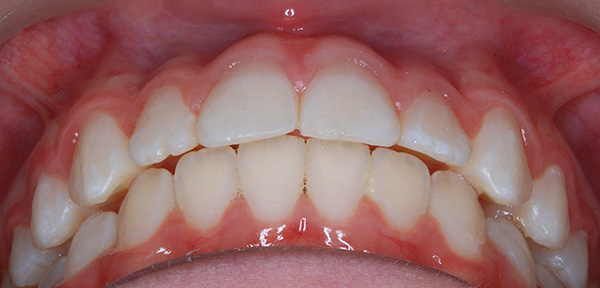
On a note
Anterior occlusion, in turn, is characterized by the presence of contacts only in the area of the frontal group of teeth. In lateral occlusions, the side in which the lower jaw is displaced is called the working side, and the opposite side, the balancing one.
In 1972, six keys for occlusion were first described, which orthodontists use to this day. They were derived from a study of 120 gypsum models of the jaws of people with orthognathic bite, and in honor of the author, these keys are called Andrews keys:
- The first key coincides with the definition of an orthognatic bite by Engel;
- The second key describes what the norm should be the amount of inclination of the crowns of the teeth along the entire length of the dentition;
- The third key describes the degree of inclination of the teeth lingually;
- The fourth key states that, normally, the teeth should be placed in an arc without tilting and turning along the axis, that is, they should stand exactly;
- The fifth key indicates the absence of gaps between the teeth;
- The last (sixth) key says that the occlusal surfaces of the chewing teeth should not be in the same plane, but three-dimensional, thereby forming occlusal curves (the Spee curve and the Wilson curve). These curves are used by dentists to plan treatment and correct staging of teeth.
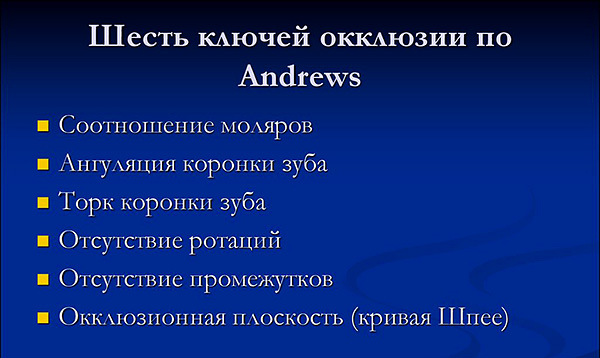
Interesting fact
Patients in normal conditions close their mouths in the position of their usual occlusion, and this position does not always correspond to the central occlusion. Meanwhile, this position is important in orthodontics and prosthetic dentistry for prosthetics and teeth, so doctors often have to resort to various tricks to determine the central ratio of teeth.
What other types of bite are the physiological norm
In addition to orthognathic, there are other types of bite, which allow you to fully chew food, talk and maintain oral hygiene at a normal level:
- Direct bite - when it is the ratio of molars corresponds to the first class of England, however, the incisors are joined together by a joint into a joint. A significant disadvantage of direct bite is that this type of closing with age leads to abrasion of the cutting edges of the incisors;
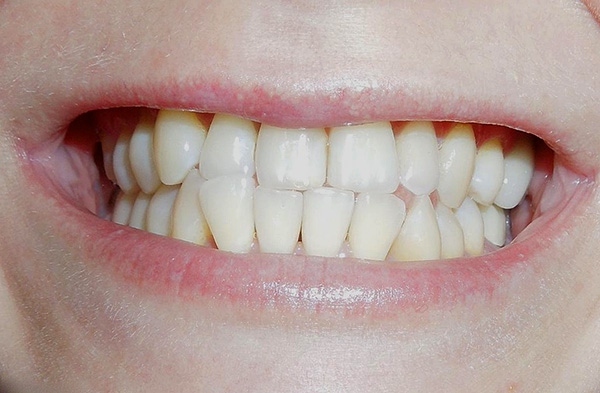
- Biprognatic bite - is characterized by a normal ratio of teeth in the lateral divisions, however, the incisors of the upper and lower jaws are excessively pushed forward and closed by cutting edges;
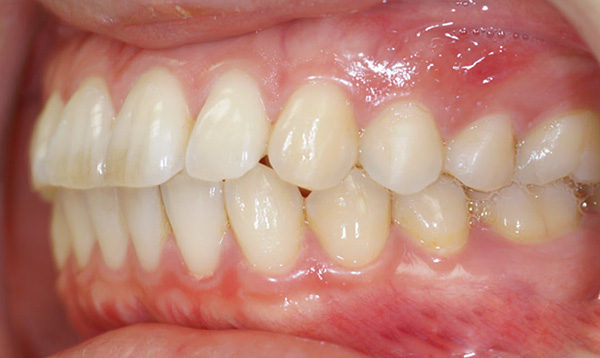
- Prognathic bite is another type of physiological bite, in which the anatomical alveolar process and incisors of the upper jaw are inclined forward toward the upper lip;
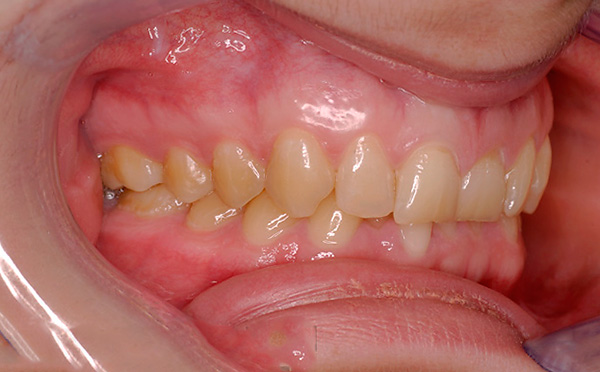
- Progenetic bite (“pro” - forward, “genus” - chin) - in the front part of the dentition, a reverse incisal overlap is observed, that is, the chin is pushed forward, and the lower incisors overlap the upper (mezial bite).
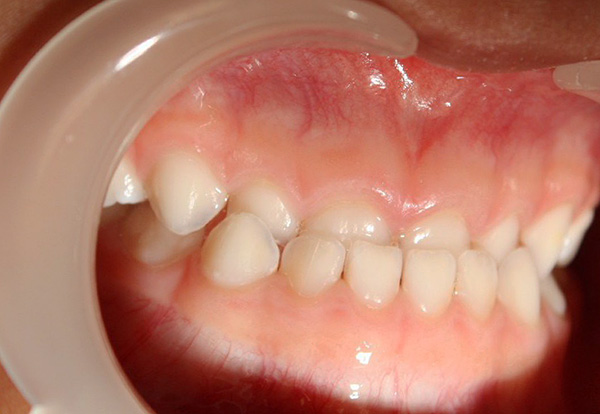
Generally speaking, these types of bite do not require mandatory correction, but sometimes patients do not like their appearance, and then the orthodontist, without disturbing the molar ratio, resorts to treatment, trying to change only the position of the frontal group of teeth.
Periods of formation of a physiological bite: what is important for parents to know
The formation of the dentition of the child can be divided into several periods. Even if there are genetic prerequisites for the formation of orthognathic bite, it is important that each of the stages proceeds smoothly, without serious pathologies. Let's look at each of the periods and see what should pay attention to the parents of the baby.
The first is the period of newborn and the beginning of the eruption of temporary teeth. In this period, the sucking reflex dominates, and thanks to the function of sucking, the development and growth of the jaws, especially the lower jaw, occurs.
At this time, the gum semicircular ridges without teeth are visible in the baby's mouth. The lower jaw is in the distal position relative to the upper one, that is, behind it - doctors call this phenomenon infant retrogeny. The structures of the temporomandibular joint are not yet expressed, which allows the baby to perform active sucking movements.
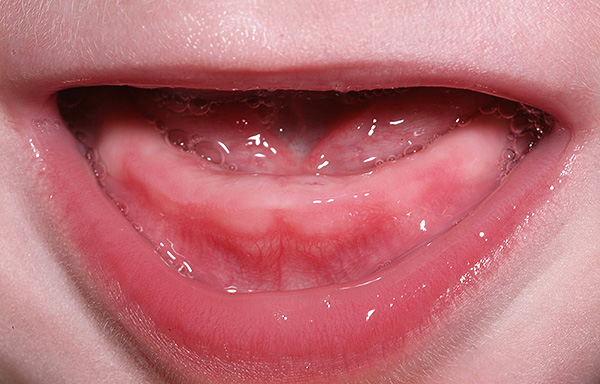
At the age of 6-7 months, the eruption of the first temporary teeth begins, they erupt in a certain order (usually the lower teeth appear first, then the upper ones).
The table below shows the standard procedure and terms of teething (in brackets are the serial numbers of teeth adopted in dentistry):
| Temporary tooth | Duration of eruption, months |
| Central incisors (I) | 6-7 |
| Side cutters (II) | 8-12 |
| Fangs (III) | 12-16 |
| The first temporary molars (IV) | 16-20 |
| Second temporary molars (V) | 20-20 |
Deviations of 2-3 months in one direction or another from the dates indicated in the table are considered normal, however, if the teeth have not erupted during this time, this is a reason to visit the pediatric dentist to find out the reason for the delay.
It is interesting
Sometimes a child is born with natal teeth in the mouth. This is not a reason for panic, but is only an individual feature of the development of the baby.
So, this is followed by a period of bite temporary teeth. The formation of such a bite ends by 3-3.5 years. This stage is characterized by the following features:
- The surface of the posterior teeth are arranged in a vertical plane;
- In the area of the posterior teeth there are tight contacts, the front upper incisors overlap the lower ones.
- The teeth are in a row without three (gaps).
Also allocate an intermediate period of preparation for the change of teeth. For this stage, the presence of three is characteristic - the milk teeth diverge, preparing a place for permanent. There is an increase in jaw bones from front to back.
At this time, the chewing function dominates, and the lower jaw is actively growing, shifting forward, the cutting surfaces of the incisors undergo a process of physiological erasure:
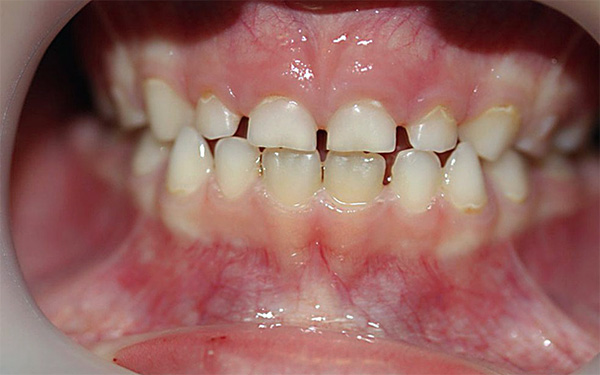
Then comes the period of changing temporary teeth to permanent ones - it begins with the eruption of permanent first molars.
The table below shows the sequence and time of eruption of permanent teeth:
| Permanent teeth | Teething time |
| First molars (6) | 6-7 years |
| Central incisors (1) | 7-8 years |
| Side cutters (2) | 8-9 years |
| Premolars (4) | 9-11 years old |
| Fangs (3) | 10-12 years |
| Second Premolars (5) | 11-12 years old |
| Second molars (7) | 12-13 years old |
Usually in this period, parents notice the presence of crowding of the teeth in the baby, especially the lower incisors. This compensatory phenomenon is caused by the fact that permanent teeth are larger in size and require more space for themselves. Plays a role and an arrangement - for example, the lower lateral incisors are located more paganly, preparing a place for massive permanent canines.
The lower front incisors can bend over the tongue or turn along the axis, that is, stand slightly sideways. Some crowding can be seen in the area of the upper central incisors.
Orthodontists call this stage the “ugly duckling” stage, but, nevertheless, this is the normal stage of bite formation. After the eruption of the canines, the incisors are aligned, and the three between the teeth disappear by themselves.
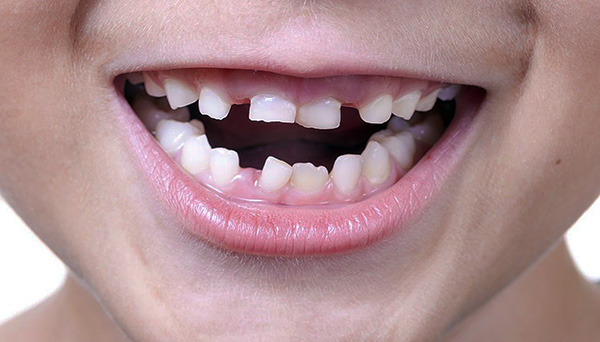
On a note
If there is a risk of the child swallowing a tooth due to its premature mobility, then such a tooth must be removed (there is also a risk of airway blockage). After the removal of such teeth, a careful control of the orthodontist is required in order to create conditions for the further normal development of the dentition of the baby. It is necessary to “hold” a place in the row so that it cannot be occupied by the “neighbors” and a permanent one can erupt at the place of a dropped tooth. To do this, the doctor can make removable laminar devices with an artificial tooth.
Should orthognathic bite be treated?
Even with orthognathic occlusion, it is still sometimes possible to detect abnormalities, in some cases requiring orthodontic treatment.
The most common occlusion anomalies include:
- The discrepancy between the sizes of the teeth and jaws, which entails the development of the crowded position of the teeth. Clinical experience shows that anatomically molars are quite massive and require more space for themselves - thus, when they erupt, they put pressure on the entire dentition, and the incisors turn on their axis, taking up less free space;
- Teething outside of its normal position - may be due to improper insertion of the tooth germ in embryogenesis, or early loss of milk teeth;
- Trem, as well as diastema (shcherbinka between the first incisors of the upper jaw). After the permanent fangs appear in the dentition, the diastema normally closes on its own, but if this does not happen, the dentist-therapist or orthodontist can refer the child to the surgeon to correct the lip frenum. Sometimes a diastema appears as a consequence of the presence of a supernumerary tooth in the upper jaw in the area between the central incisors, which can only be detected by X-ray. As for the three, they appear compensatory, if the teeth are smaller than they should be for the existing jaw sizes;
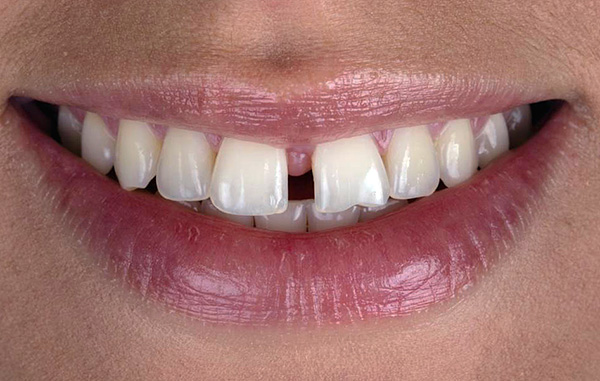
- Delay of milk teeth in a row is a phenomenon caused either by the absence of primordia of permanent teeth or by the incorrect position of the rudiment in the bone, which prevents it from cutting through.
In all these cases, despite the general physiology of the bite, the doctor may need to intervene.
Modern approaches to the treatment of first class bite anomalies
With a lack of space in the dentition and minor deviations in the position of individual teeth, sometimes the most correct tactic will simply not interfere, because the treatment in this case can aggravate the situation, be lengthy and tedious for the patient.
With a deficit of space of more than 4 millimeters, the patient may be offered to make transparent caps with rearranging individual teeth to a more correct position. In such cases, on gypsum models of the patient's jaws, the teeth that need to be moved, the doctor gently saws out and moves them to another position - then according to this model, a mouthpiece of transparent material is compressed.
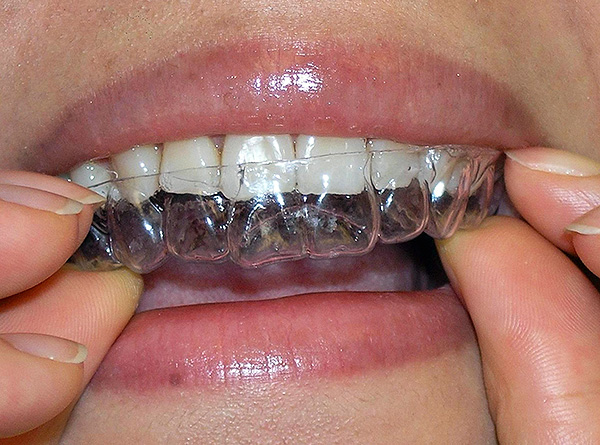
For more complex occlusion anomalies, the doctor may recommend treatment with a bracket system in order not to disrupt the first class ratio.In this case, a large expansion is not necessary, so ligature braces are considered more acceptable for this purpose. It is precisely ligature braces that allow the doctor to accurately track the inclinations of individual teeth, and the arcs in these systems are narrower, which guarantees the absence of excessive expansion of the dentition.
As you can see, even with orthognathic bite, the help of an orthodontist is sometimes superfluous. Be healthy!
What is the correct and incorrect bite: comments of the orthodontist
What is important for parents to know about the formation of the correct bite in a child?

